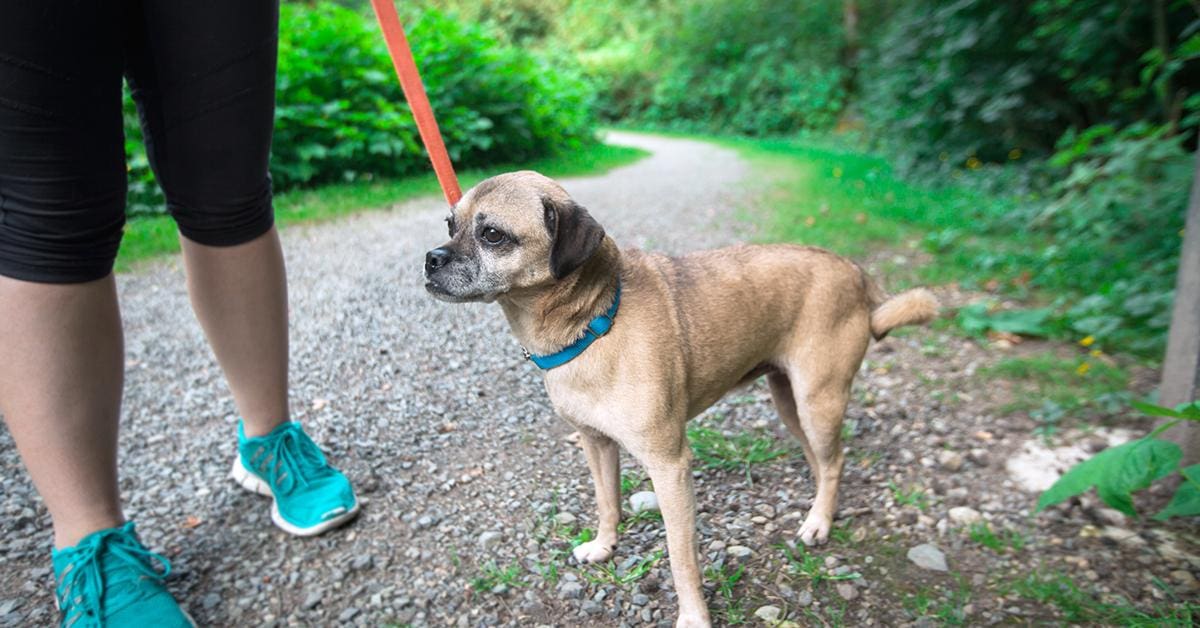Before you will be ready to run a trail or even a half-marathon with your dog, check out these tips to make your training journey a success.
1. Learn to Walk – It may seem like baby steps, but learning how to properly walk with your dog establishes good habits that can be applied to faster speeds and longer distances. It can also help reduce the reactions to distractions along the way. The idea is that dogs should walk with you, not pull away from you when on a leash. This is called loose-leash training since the leash should ideally be positioned with some slack or a swoop. Dogs with good loose-leash skills should stop when you stop and look to you for cues as to when to resume walking and will help keep your pace when you get to the running stage.
2. Vet Check – It’s important to check with your vet about when is a good age to begin running with your dog. Puppies and young dogs may not be finished developing bone structure and could risk physical damage if you begin running too soon. Larger breeds often take longer to reach running age than smaller dogs.
3. Keep it Short – When you decide that your dog is ready to increase the pace, start by adding short jogs to your usual walking routine. Each week stay at the jogging pace longer to build their endurance (and yours). Gradually, you’ll both be able to keep up with longer episodes of the faster pace.
4. Hit the Trail – Consider hitting the trails for your runs. A paved path, sidewalks, and roads can make paws feel tender and may even rub blisters or cause bleeding. Dirt and grass are much softer running surfaces and should reduce the development of common foot issues when running. Also, if you are running when it is sunny, the paved path can get hot!
5. Take Breaks – Even if you feel like you can run forever without stopping, dogs need to take more frequent breaks for water and quick rests. This is especially true if it’s warm outside.
6. Know Their Limits – With a bit of research and a chat with your veterinarian and you can get an idea of the kinds of distances that your dog could handle. Dogs with flat faces such as bulldogs and pugs (known as brachycephalic) can have trouble breathing while running and might not make it very far before they would be ready plop back down on your couch and take a break. An Alaskan Malamute, known for their endurance, might be able to just go and go.
7. Make Your Runs a Routine – Finally, with all preparation involved in getting your dog used to running with you, it makes sense to keep it up. Establishing a routine will help you and your dog stay conditioned for years of fun runs together.




